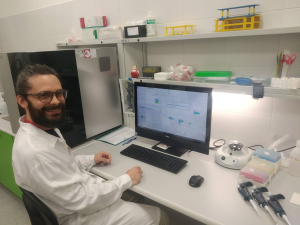On the trail of immune reactions in sepsis
Myeloid derived suppressor cells (MDSC) are heterogenic populations of cells that, due to their suppressive activity, negatively affect the body’s immune response during inflammation, infections, but also after transplants or in oncological diseases. The role of these cells in sepsis, popularly called blood poisoning, was the focus of the Cellular and Molecular Immunoregulation research team of the International Clinical Research Center of St. Anne’s University Hospital Brno (FNUSA-ICRC).
Animal models have shown that myeloid derived suppressor cells are important regulators of immune processes during sepsis. However, in humans, confirming of these observations has been very challenging, especially due to the lack of clearly defined preparation protocols and phenotypic schemes for diverse subsets of these cells. Our researchers focused on the use of flow cytometry together with mathematical models to more accurately determine the role of MDSC during sepsis. “Using this method, we combined complex phenotyping with mathematical algorithm for unsupervised clustering using self-organizing maps to identify three recently defined subsets of human MDSCs,” explained Marco De Zuani Ph.D. MSc., the first author of the work.
Twelve patients affected by septic shock and nine healthy individuals participated in the study. The expansion of two types of human MDSCs was demonstrated during the early phase of sepsis, and high levels of PMN-MDSCs were present many months after discharge from the hospital, suggesting a role for these cells in the later health complications associated with sepsis. “The data from this study suggest that the expansion of these cells could be responsible for the high mortality observed in patients who survived septic shock,” said Dr. De Zuani.
Targeted treatment of MDSCs could thus improve patients’ quality of life after sepsis. However, this is not the only result of this work. The combined use of flow cytometry and so-called metaclustering algorithms enables the rapid identification of various immune cells not only in the laboratory but also in the clinical environment, which might have great potential for future screening and diagnosic applications.
You can find the article here:
Supported by the European Regional Development Fund – Project ENOCH (No. CZ.02.1.01/0.0/0.0/16_019/0000868).


